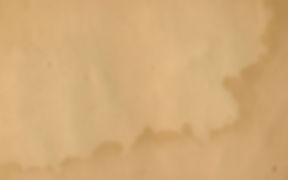
BLACK MOUNTAIN COMPLEX PETROGLYPHS
Recovering Indian history from ancient Native American rock writings.
Lost Site
The graphic below, left, provides insight into the location of Lost Site relevant to the entire complex, as indicated by the small yellow arrow left, center of the graphic.
The graphic to the right is an expanded view of the Lost Site area showing the position of Murphy’s well, which is no more than a minor spring that only produces enough water to keep the immediate area, just under the “s”, green during the summer months. The well’s proximity to the chokepoint at Lost Site suggests that seep-holes dug into the ground may have provided water for the defenders at Lost Site prior to the battle.
In the left photo, the chokepoint at Lost Site was created by the black basalt rock formations just to the left and right sides of the off-highway (OHV) vehicle trail. The right photo is a view of the left side rock formation, which has been a monument for an estimated five thousand years. The photo below displays the largest glyph cluster on the monument:
As suggested above, there were two fronts to the battle. The main attack is referred to as the Harper Dry Lake or Southwestern Front; the Rear Guard defensive position is referred to as Murphy’s Well or Northeastern Front. The graphics below demonstrate these fronts.
Harper Dry Lake/ Southwestern Front Murphy’s Well/Northeastern Front
Consolidated Battlefield
The graphic on the top left displays the main attack route. The graphic on the top right displays the route taken by the defenders when they consolidated with the remaining forces relocating from the Black Canyon position. The bottom graphic assimilates the two combined routes taken by the defenders as they fought. The right “leg” of the configuration demonstrates how effective the Rear Guard was in keeping the “escape” route open for the defenders at Black Canyon who were engaged with attempting to repel the main attack. The words leg and escape are in parentheses, because of their alternate/metaphoric interpretations; the “leg” of an anthropometric figure and “escape” to suggest a military tactic for drawing an enemy into an ambush, which actually occurred at Tortoise Head Gap.
Hinkley Gate
This glyph marks Hinkley Gate; it was shot up by hunters in 2013









The purpose of this site is to inspire awareness, preservation and research of all rock art/writings. As the site grows and develops, it is hoped that YOU will help in these efforts by submitting questions, comments and suggestions: Our primary means of communication is the 'Contact' button above.
© 2023 by My site name. Proudly created with Wix.com